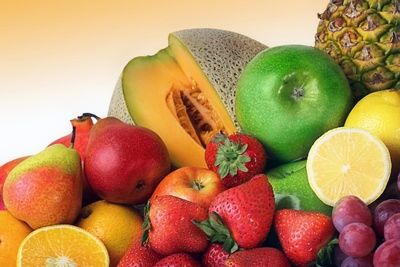Holistic Arts Institute Integrating Ancient Wisdom and Modern Practice
THE COLORFUL SPECTRUM
OF PHYTONUTRIENTS
The primary benefits of these natural chemicals lie in their abilities as antioxidants
to fight premature aging, prevent disease, and aid the body to resist cancer.
to fight premature aging, prevent disease, and aid the body to resist cancer.
The
colorful spectrum of phytonutrients is a vast, frequently untapped therapeutic
boon to natural healing. To access this
rich resource and begin experiencing its many benefits, simply eat a variety of
fruits and vegetables of all colors—the more colorful and beautiful the
better!
SELF-PACED LEARNING

Because HAI’s typical student is an
adult learner with family and professional responsibilities, our flexible
learning format works within your own schedule.
You may enroll at any time and progress at your own pace as the rest of
your life plan allows. Although,
learning at HAI is self-paced, we do ask that all courses and programs be
completed within two years of the initial enrollment date.
Most of our courses require about sixty
hours of study time. Some students are
able to complete a course in as little as two weeks, while others may take a
month or more. Our programs then, each
consisting of three to twelve courses, can easily be completed within one to
two years or even less with a regular study routine.
The Healing
Benefits
of Water

Water is a medium that is able to amplify and send energetic wave patterns. The ability of water to copy, memorize, and carry energetic signals and messages was shown in the 1980s by researcher Jacque Benveniste. In an experiment, he exposed ordinary water to the recorded signals of acetylcholine and ovalbumin. The recordings were then introduced to isolated guinea pig hearts. The effects of the digitized water were identical to the effects on the heart produced by the actual substances of acetylcholine and ovalbumin. This experiment and others like it, although controversial, provide insight into the importance of water in cellular communication and the ability of water to duplicate and transmit the energy frequencies of a substance. The ability of water to copy and memorize information is also the theory behind the potentization process that is used in homeopathy (Lloyd 65). . . MORE!
You can’t use up creativity.

The more you use,
the more you have.
~Maya Angelou
Fast, Easy, Affordable!

Earn a diploma
from
the comfort of
your own home:
Natural Health Consultant (NHC)
EXCITING
CAREER OPTIONS

At this time, many holistic
practitioners choose to work in private practice offering individualized
holistic wellness consultations. Others
may be involved in:
~Holding health seminars.
~Writing books and articles on various aspects of holistic
medicine.
~Developing DVD and CD programs concerning holistic health.
~Owning and operating a health food store.
~Owning and operating a healthy restaurant.
~Owning and operating a health spa.
~Owning and operating a holistic clinic.
~Manufacturing or formulating dietary supplements.
~Manufacturing or formulating herbal products.
~Manufacturing or formulating aromatherapy products.
~Manufacturing or formulating flower essence products.
~Manufacturing or formulating gem essence products.
~And much, much more. . . .
The Colorful Spectrum of Phytonutrients
By Theda Renee Floyd, PhD, RN, HHP

From
the faint blush on a ripe peach to the vibrant purple of concord grapes, the
beautiful colors of fruits and vegetables are imparted by natural chemicals
called phytochemicals or phytonutrients. These nutrients not only give plants their
color, they also provide flavor, and natural disease resistance. Plants form phytonutrients to protect
themselves from disease, and these properties, fortunately, extend to us. The primary benefits of these natural
chemicals lie in their abilities as antioxidants to fight premature aging,
prevent disease, and aid the body to resist cancer. There are many, many thousands of
phytonutrients that work synergistically to support our health. Tomatoes alone are believed to contain an
estimated ten thousand different phytonutrients (Balch 48).
As
phytonutrients are found only in plants, fruits and vegetables are critical
components of our diet. To receive the
most phytonutrients from your vegetal foods, obtain them from local,
organically grown sources; and, with few exceptions, consume them as close to
their natural state and as soon after harvest as possible. Interestingly, an easy way to identify many
of these important plant nutrients is by the color of the fruit or vegetable
under consideration:
Purple-blue-red foods
These
foods contain anthocyanins, which belong to a subclass of phytonutrients called
flavonoids and are powerful pigment antioxidants, searching for and disabling
the harmful “free radicals” that deteriorate the internal structures of
cells. It is this deterioration that
causes various diseases, including macular degeneration, heart disease and
certain cancers. Purple-blue-red food
sources include beets, berries (red currents, blackberries, blueberries, etc.),
cherries, chili peppers, eggplant, plums, pomegranates, prunes, red or purple
grapes, red apples (with skin), red cabbage, red pears (with skin), red
peppers, red wine, and strawberries.
Red foods
Red
foods are high in lycopene, which is a carotenoid red pigment that imparts the
color to fruit and vegetables, especially tomatoes. It is a powerful antioxidant and protects
against cancers of the digestive tract (the colon, esophagus, mouth, rectum,
stomach, and throat), as well as cancer of the bladder, cervix, lung, pancreas,
and prostate. Lycopene is oil-soluble
and can be more easily absorbed if it is cooked or consumed with beneficial
fats such as olive oil. Red food sources
include guava, pink grapefruit, pink grapefruit juice, salsa, tomatoes, tomato
juice, tomato sauce, tomato soup, and watermelon.
Orange foods
These
are rich in beta-carotene, which is a carotenoid orange pigment that is known
to be a precursor of vitamin A (retinol).
Our bodies are able to use beta-carotene to manufacture vitamin A in the
liver. Beta-carotene’s antioxidant
actions make it valuable in protecting against (and in some cases even
reversing) precancerous conditions affecting the breast, mucous membranes,
throat, mouth, stomach, prostate, colon, cervix, and bladder. Individuals with the highest levels of
beta-carotene intake have lower risks of lung cancer, coronary artery disease,
stroke, age-related eye disease, and eye function. Beta-carotene is also important because
vitamin A is required for cell differentiation, bone growth, immunity, tooth
development, reproduction, and healthy skin and hair (Farmer-Knowles 113). Orange food sources include acorn squash,
apricots, cantaloupe, carrots, carrot juice, mangoes, pumpkins, sweet potatoes,
and yams.
Orange-yellow foods
These
all contain beta-cryptoxanthin, a natural carotenoid pigment and a potent cell
and DNA-protecting antioxidant. It is
also converted to vitamin A and is therefore considered a vitamin A precursor. Research suggests that cryptoxanthin could
potentially act as a chemo-preventive agent against esophageal and lung
cancer. Orange-yellow food sources
include nectarines, oranges, papaya, peaches, pineapples, tangerines, and yellow
grapefruit.
Yellow-green foods
Yellow-green
foods are sources of lutein and zeaxanthin, both of which fight cataracts and
macular degeneration in the eye. Lutein
is actually a yellow-orange carotenoid pigment found in many green vegetables,
but it cannot be seen because it is overpowered by the green of the
chlorophyll. Both lutein and zeaxanthin
may be protective in eye disease because they absorb damaging blue light that
enters the eye. Yellow-green food sources
include avocado, collard greens, cucumbers, green beans, green peppers, honeydew
melons, kiwifruit, mustard greens, peas, romaine lettuce, spinach, sweet corn,
turnip greens, yellow peppers, and zucchini.
Green foods
Green
foods are rich in detoxifying sulforaphane, isothiocyanates, and indoles, which
play a key role in stimulating cancer-fighting liver enzymes. Sulforaphane is an anticancer and
antimicrobial compound that is present in cruciferous vegetables, or
“brassicas.” Isothiocyanates are a
family of sulphur containing organic compounds, which are largely responsible
for the typical flavor of cruciferous vegetables and for the hotness of
horseradish, radish, and mustard. They
also stimulate enzymes that may block steroid hormones, and their presence in
the diet helps to prevent the promotion of breast and prostate cancers. Indoles are one of the major anticancer
substances and are also found in cruciferous vegetables. They are a member of the class of
sulphur-containing chemicals called glucosinolates and are formed whenever
cruciferous vegetables are crushed or cooked.
Green food sources include broccoli, Brussels sprouts, cabbage,
cauliflower, kale, napa cabbage, and Swiss chard.
White-green foods
The
white-green foods offer multiple health benefits. Garlic and onions are a rich source of the
antibiotic, antifungal, and antitumor compound known as allicin, mushrooms
contain other disease battling chemicals, and still other white-green foods
contain a variety of cell supporting phytochemicals. Allicin protects the stomach against the
formation of ulcers and helps to treat intractable diarrhea resulting from
infection with cryptosporidium parvum bacteria. It also lowers blood pressure, reduces the
risk of heart disease and stroke, blocks the ability of carcinogens to mutate
healthy cells into cancerous cells, and boosts immunity (Balch 54). The phytochemicals of the white button
mushroom (Agaricus bisporus) have
been shown to inhibit the proliferation of breast cancer cells in
postmenopausal women (Farmer-Knowles 113).
They are potential breast cancer chemo-preventive agents, as they
suppress aromatase activity and estrogen biosynthesis. Aromatase is a protein that makes estrogen,
and estrogen plays a major role in the development of breast cancer. Do note, however, that all mushrooms must be
cooked in order to receive their nutritional value as the cell walls cannot be
digested unless they are tenderized by heat (Balch 167). Asparagus, another white-green food, contains
the phytochemical glutathione, which has antioxidant
and anticarcinogenic properties. White-green
food sources include artichokes, asparagus, celery, chives, endive, garlic,
leeks, mushrooms, onions, and shallots.
Color coding
your choice of fruits and vegetables may not be an infallible system, but it is
a practical guide to ensure that you experience therapeutic gain from the foods
that you choose to consume. The colorful
spectrum of phytonutrients is a vast, frequently untapped therapeutic boon to natural
healing. To access this rich resource
and begin experiencing its many benefits, simply eat a variety of fruits and
vegetables of all colors—the more colorful and beautiful the better!
Works Cited
Balch, Phyllis A. Prescription
for Dietary Wellness.
Farmer-Knowles, Helen.
The Healing Plants Bible.